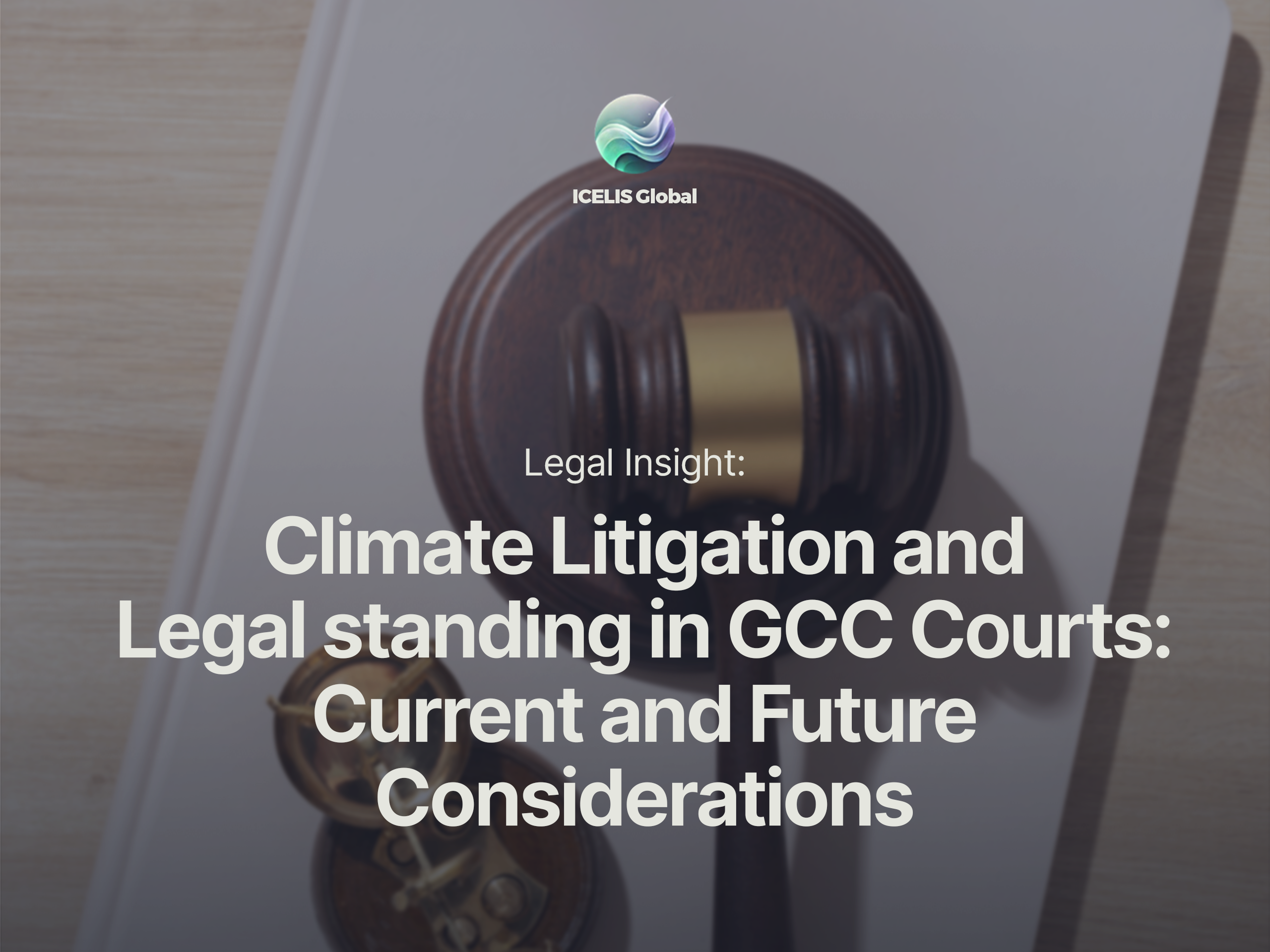Introduction
Climate litigation is gaining momentum globally as governments and corporations face increasing pressure to act on climate change. In the Gulf Cooperation Council (GCC) region, comprising Bahrain, Kuwait, Oman, Qatar, Saudi Arabia, and the UAE, the conversation is emerging slowly but meaningfully. Although GCC countries are heavily reliant on fossil fuels, climate-related legal challenges are beginning to surface in policy discussions, environmental laws, and human rights frameworks.
Legal Standing: A Barrier to Environmental Claims
One of the core challenges to successful climate litigation in GCC courts is legal standing i.e. the right to bring a case. The traditional approach to legal standing in these jurisdictions has been conservative, often requiring direct, personal harm for an individual or entity to sue. This presents difficulties for public interest litigation, especially environmental claims, where the harm may be communal or future-facing. Without legal reforms that broaden who can sue on behalf of the environment or future generations, the door to climate litigation remains only slightly ajar.
Notable Developments and Jurisprudence
While climate cases are rare in the GCC, there are signs of change. The UAE, for instance, has launched initiatives supporting environmental sustainability and recognized the importance of climate law within its 2050 Net Zero strategy. Saudi Arabia’s environmental legal framework has expanded through the National Environment Strategy and royal decrees. However, no landmark climate lawsuit has yet tested the interpretation of environmental rights in these states.
Some courts have addressed pollution or land use disputes indirectly related to climate, offering glimpses of how judicial reasoning could evolve. Yet, until standing rules are relaxed or more flexible public interest doctrines are adopted, broader climate litigation remains constrained.
Future Pathways for Climate Litigation in the Region
For climate litigation to thrive in the GCC, several developments are essential:
1. Expanding legal standing to include NGOs, civil society groups, or ombudsman-type institutions. This would empower more actors to initiate cases in the public interest, especially where climate impacts affect communities broadly rather than specific individuals.
2. Codifying environmental rights in national constitutions or civil codes. Clear legal recognition of the right to a clean and sustainable environment would give claimants a solid foundation to challenge harmful activities or government inaction.
3. Judicial training and awareness, especially on international climate jurisprudence and human rights frameworks. Equipping judges and legal practitioners with knowledge of evolving global climate norms can help build a more robust and informed bench.
4. Cross-border collaboration to align with global climate goals and integrate GCC approaches with emerging global precedents. Regional cooperation could encourage harmonized policies, legal consistency, and shared best practices on climate accountability.
5. Developing specialized environmental courts or tribunals in key GCC jurisdictions. Such bodies could provide expert adjudication, expedite climate-related cases, and serve as a model for environmental governance in the Arab world.
Conclusion
While still nascent, climate litigation in the GCC is on the cusp of significant change. Expanding legal standing is key to enabling citizens and organizations to challenge climate inaction. Future legislative and judicial developments, supported by global legal trends and domestic reforms, could unlock the potential for meaningful environmental justice across the region.
